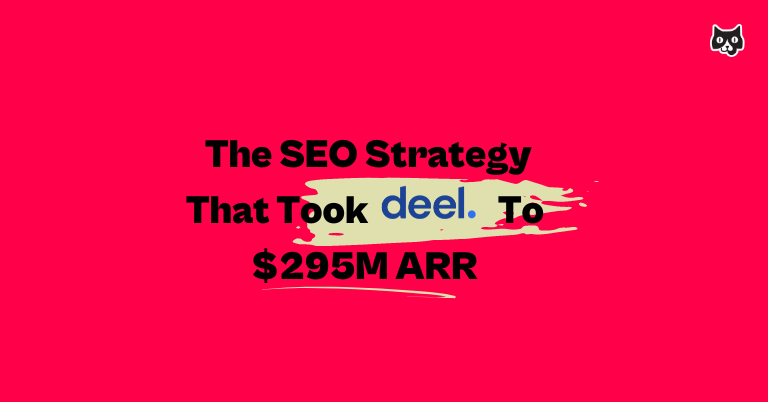In only 4 years (and with a domain change in the middle of it), Deel went from 0 to 270,000 visits a month. In the same time, they grew to $295M ARR.
In 2020, Deel hit unicorn status as a three-year-old company, valued at $1.25B, only seven months after being valued at only $225M.
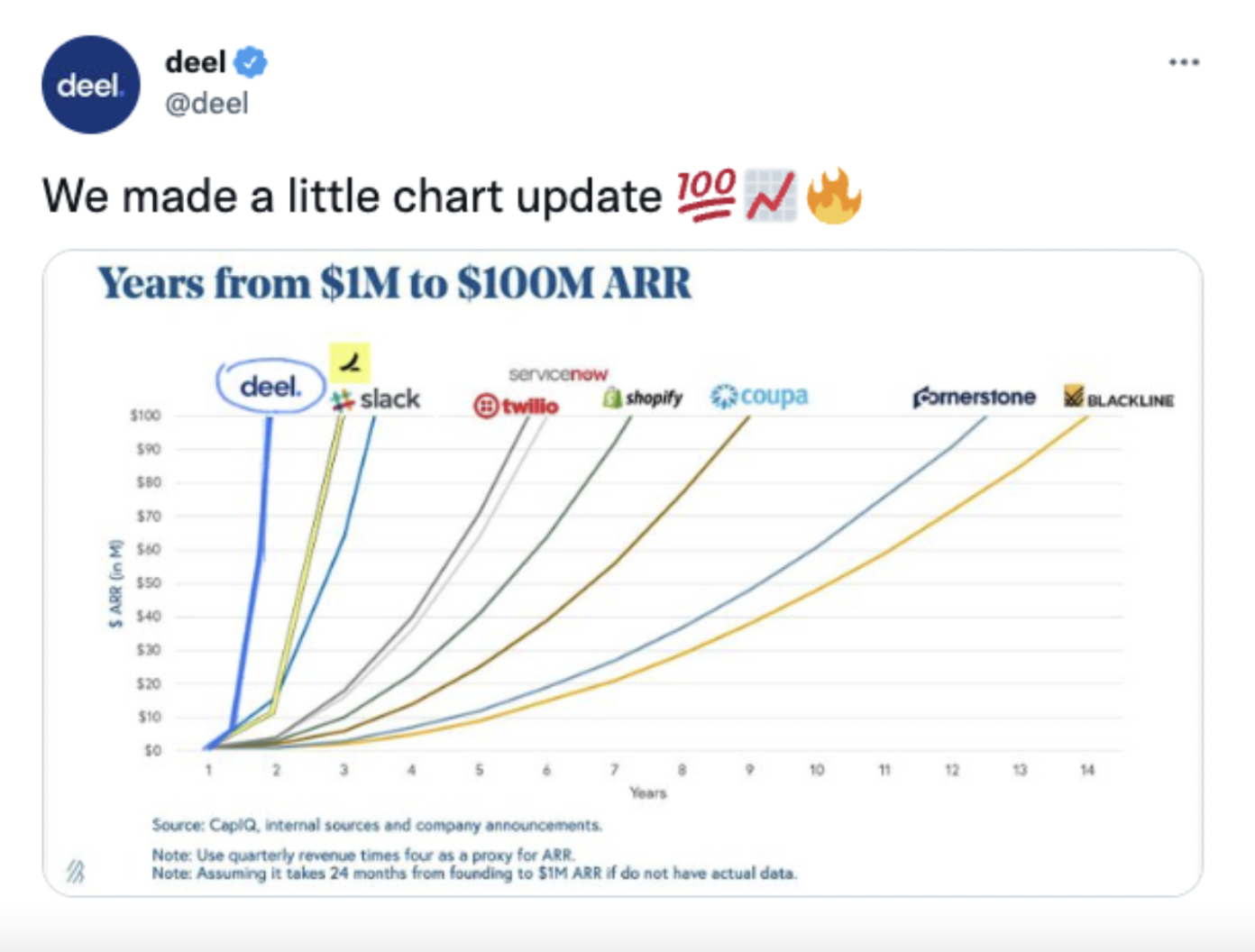
Deel’s mission is to let companies hire people anywhere compliantly, so that more people can work remotely. A noble cause for all of us.
I’ve enjoyed following Deel’s growth and decided to take a deeper look into what they’ve been doing to be so successful with search.
I’m exploring the main factors I found that contributed to Deel’s SEO success:
- Creating a glossary
- International SEO
- Templated pages by job title
- Optimizing for featured snippets
- Naturally building backlinks
1. Creating a glossary
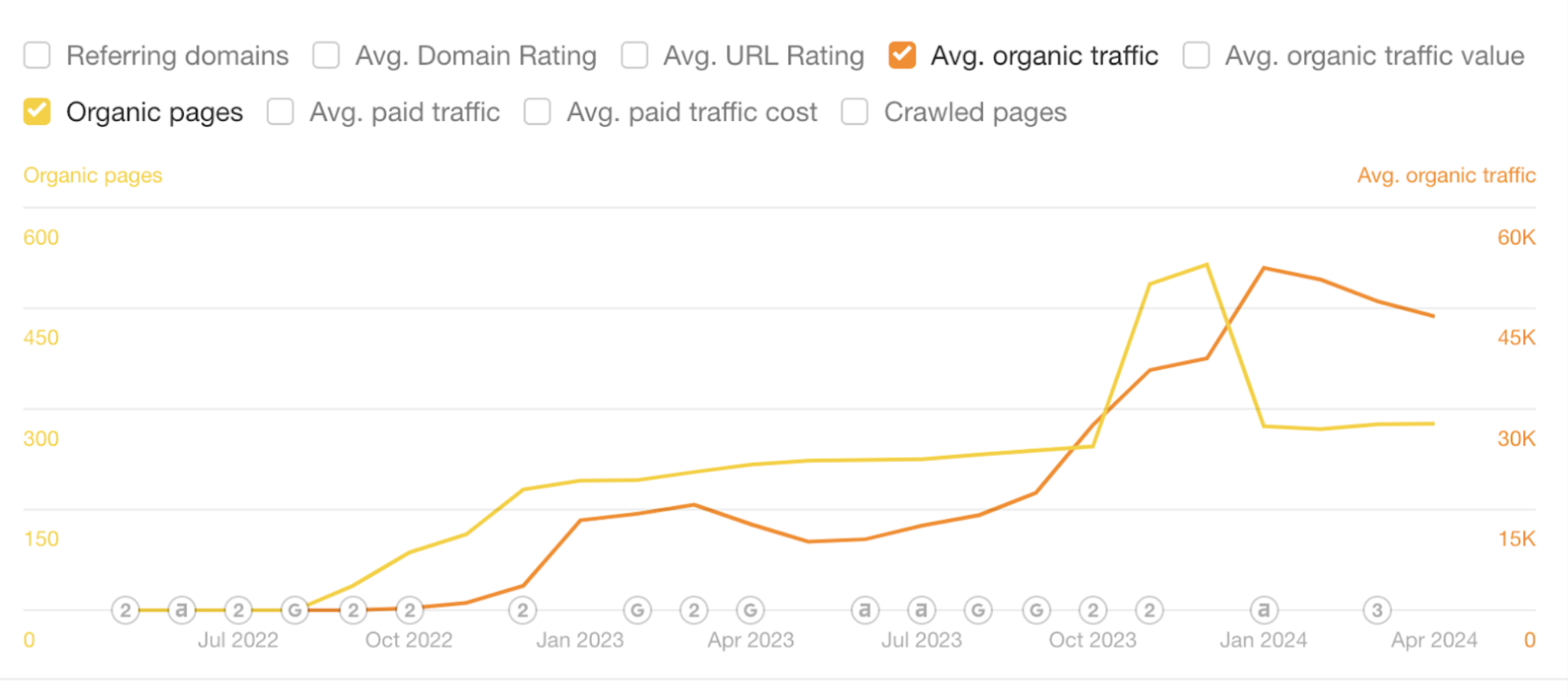
The glossary pages themselves, with over 278 pages generate 45k visits a month, which is even more traffic than the blog. That’s not even counting the glossary pages in other languages.
The glossary entries they cover range from super relevant to the product (e.g. “foreign subsidiary”) to super broad (e.g. “employee”), and some that are only potentially adjacent to Deel’s product (e.g. “Coinbase” or “asynchronous communication”).
In the US, the glossary ranks for over 36k keywords.

Some of the top pages rank for almost a thousand keywords and have thousands in monthly traffic to a single page. Overall, all of the website’s content ranks an average of 64 visits per page, so we know that these glossary pages are carrying a lot of it.

We can see that 2.5% of these pages (7 pages) bring in 25% of the traffic to the glossary section, but 91 of the pages bring in 100-1000 visits per month.

I’d think that a big content play like this would require a lot of internal links. When we look at the glossary pages themselves, few of them have many internal links pointing to them.
I suppose it’s because they aren’t money pages. But they use the content to drive internal links back to both blog content pages AND more glossary pages.
Sometimes there are even 0 links pointing to the glossary page, but each of the pages has around 30 outbound links to high-value pages like their salary insights tool or their employment salary calculator. Plus, there’s the “related items” at the bottom of each glossary entry, pointing to other related glossary entries.
If you have these super top-funnel pieces with thousands of visits a month, you want to funnel the traffic down through links to your more important but more niche pages.
They don’t even have many external backlinks pointing to these pages. Deel has publicly stated that they’ve never spent a dime on link building—it’s all completely organic (more on that below). And the glossary pages only have 680 external links pointing to them (only 2.4 per page).
So what is it that made these pages so successful?
First of all—they’ve added schema markup to them. Schema markup helps Google understand the content on a page better, which can improve how it’s displayed in search results.
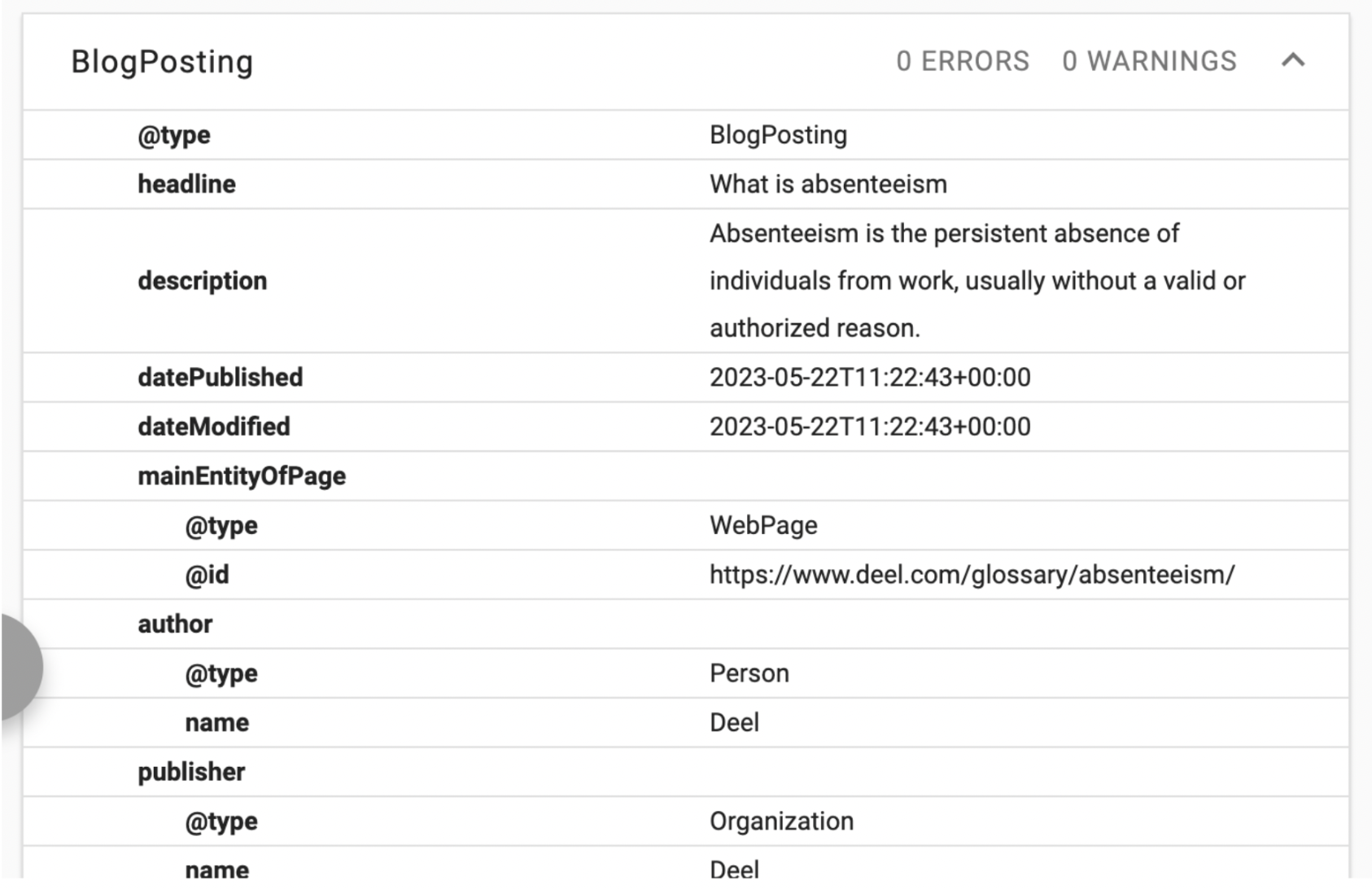
In an interview with Anja Simic, Director of Content Marketing at Deel, we learned that traffic to the glossary pages started shooting up since they launched the schema.
I’m curious as to why they used the “BlogPosting” type instead of “DefinedTermSet”, which would be perfect for glossary items/definitions. This is the Schema.org definition for the “DefinedTermSet” schema:
A word, name, acronym, phrase, etc. with a formal definition. Often used in the context of category or subject classification, glossaries or dictionaries, product or creative work types, etc. Use the name property for the term being defined, use termCode if the term has an alpha-numeric code allocated, use description to provide the definition of the term.
Additionally, they could do with adding “ItemList” schema to the glossary category page. But in any case, the schema markup they chose seems to have worked.
Second, the pages themselves are more than a simple, AI-generated definition. They’re fully fleshed, top-funnel blog posts, some with over 2000 words:
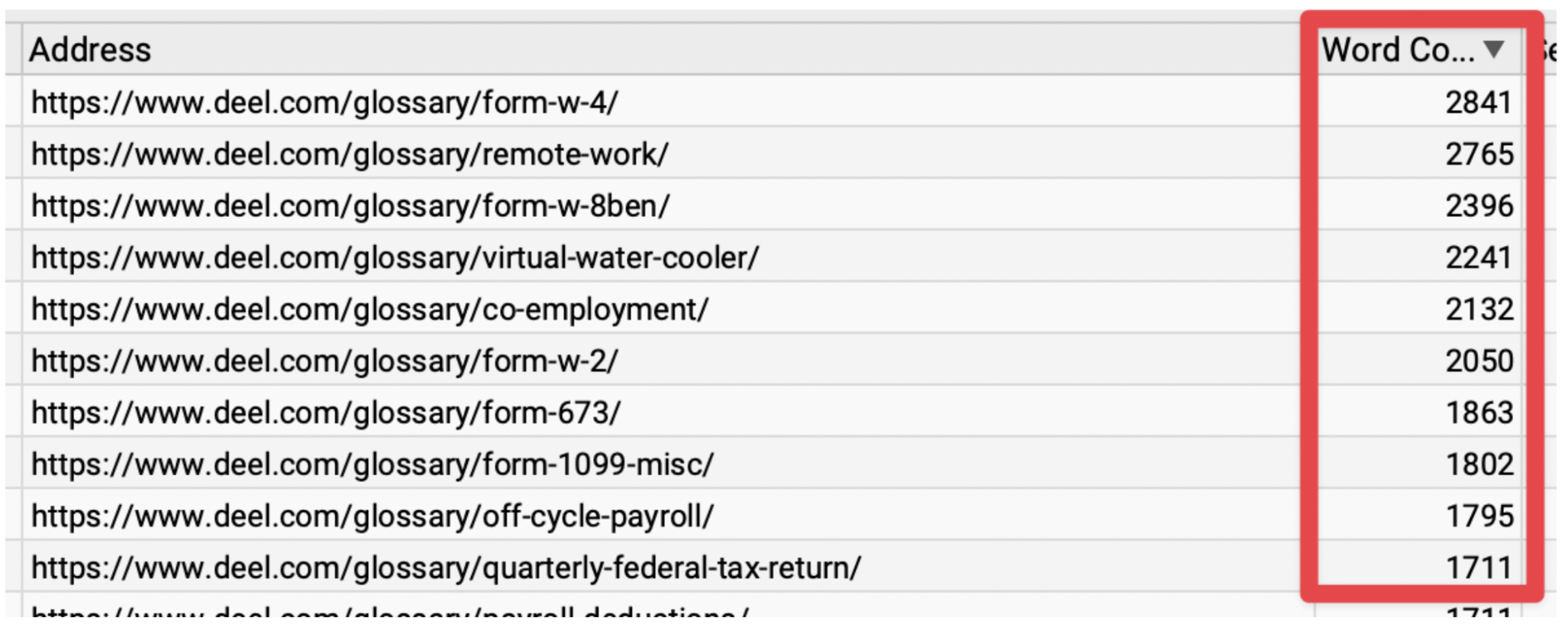
They have table of contents and cover different aspects of the term:
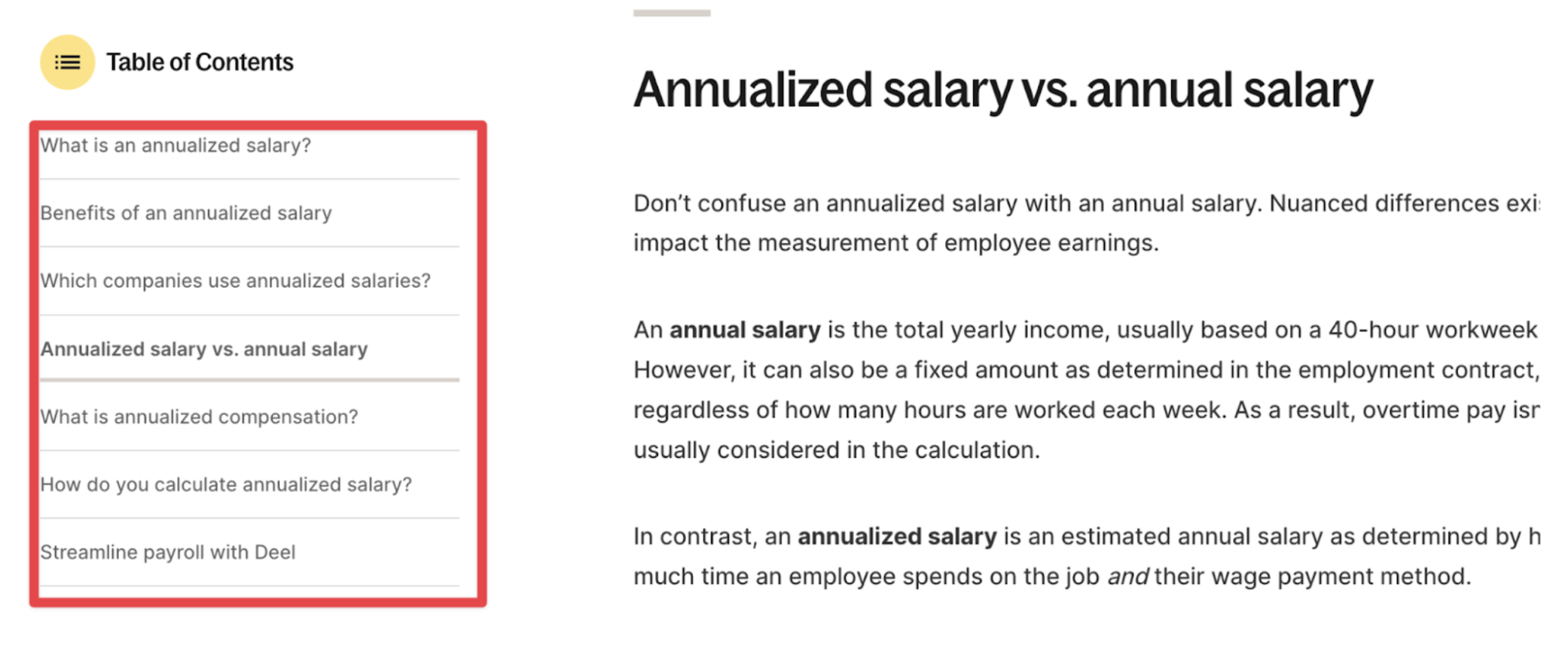
Adding more meat to your glossary pages is smart. It allows Deel to:
- Gain topical authority and high-traffic opportunities without insulting the intelligence of their customers
- Separate the “super basic” content from the content that is lower-funnel or thought leadership content
This is where all the “what is” kind of content should belong, not on the blog.
2. International SEO
Out of the 250k+ visits Deel.com gets per month, only 24% of traffic is from the US.
They’ve decided to go with a subdirectory for each language instead of a subdomain or ccTLD, which we think is the best move for international SEO.
Unlike ccTLD or a subdomain, all the SEO work gets directed to the same domain, which means the work you do across all sites helps the domain as a whole rather than each language individually. It’s also much easier to manage logistically.
According to an interview with Anja Simic, Director of Content Marketing at Deel, they have a different content strategy for each region. She asks her regional marketing managers what product they’re focusing on and what targets they need to hit.
While she give the country directors playbooks of what works in English, they never copy-paste.
Each region has its own strategy.
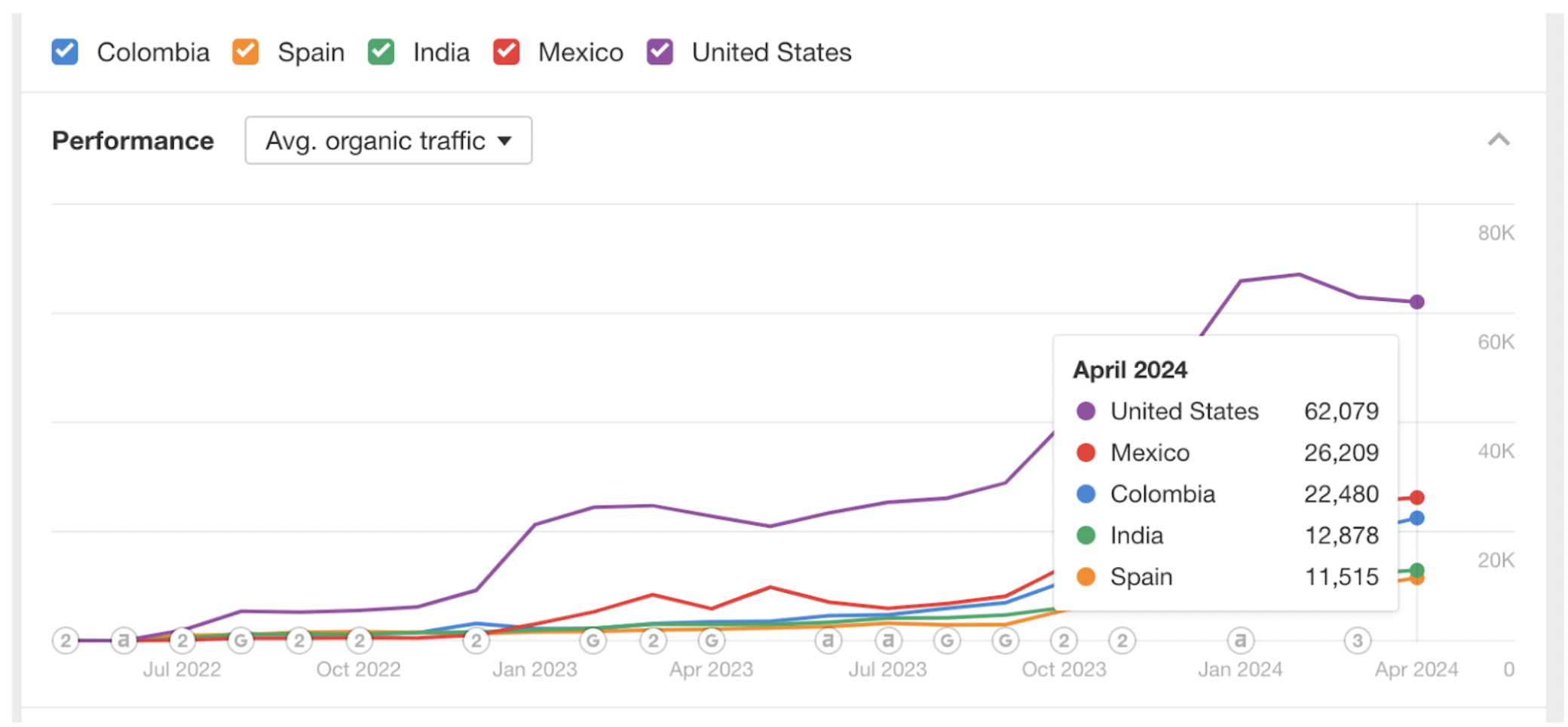
44% of traffic comes from Spanish-speaking countries, like Mexico, Colombia and Spain. Its Spanish subdirectory, https://www.deel.com/es/, receives 97.2k visits every month.
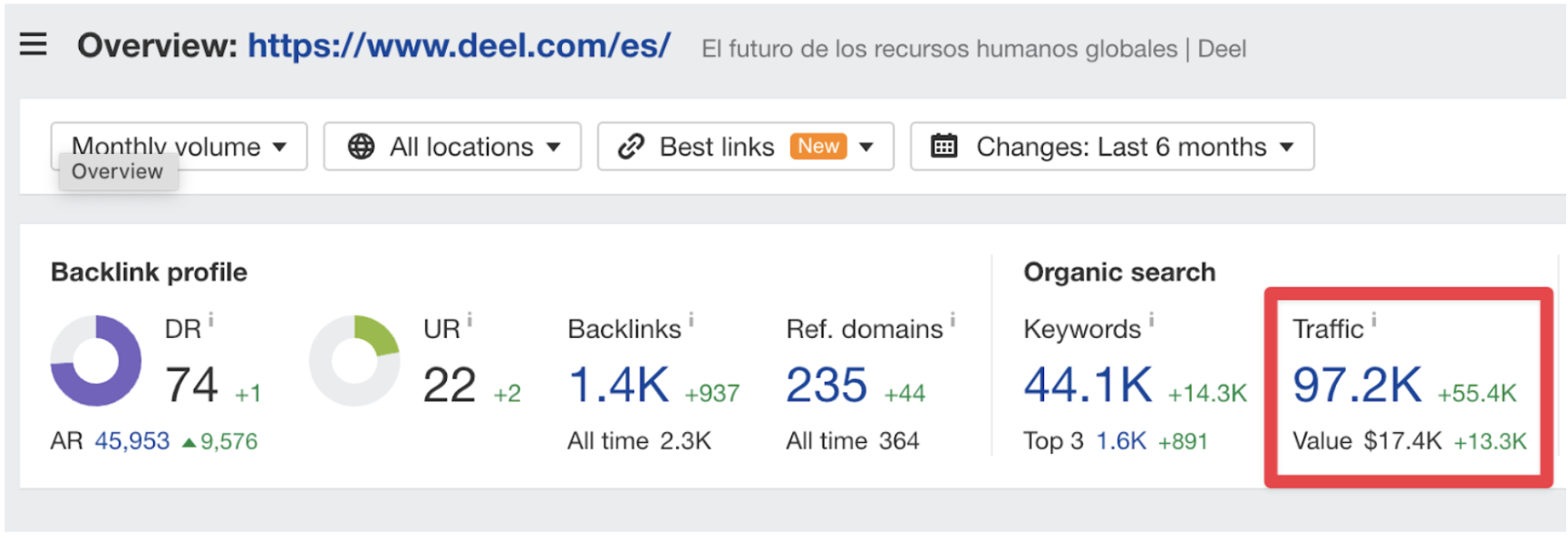
English and Spanish are the clear winners, covering 94% of the traffic. The whole website is localized into 9 different languages. The breakdown is as follows:
- English (146k)
- Spanish (92.2k)
- Portuguese (7.6k)
A large part of this might be due to the glossary content only being localized into Portuguese and Spanish.
Also, Deel’s internal team currently only has English and Spanish content producers. So the Spanish content is unique and different from the English content.
The rest break down into:
- Dutch (2.4k)
- Japanese (2.2k)
- French (1.4k)
- Korean (604)
- Simplified Chinese (17)
- Chinese Taiwan (204)
- German (1)
When it comes to the blog, the results seem to correlate. Without going into counting the exact number of blog posts, if we look at pagination (and around 28 blog posts per page) we can assume each language has these many blog posts:
- English: at most 980
- Spanish: at most 500
- Portuguese: at most 140
- Dutch: at most 84
- Japanese: 3
- Korean: 2
- Simplified Chinese: 5
- Chinese Taiwan: 1
- German: none
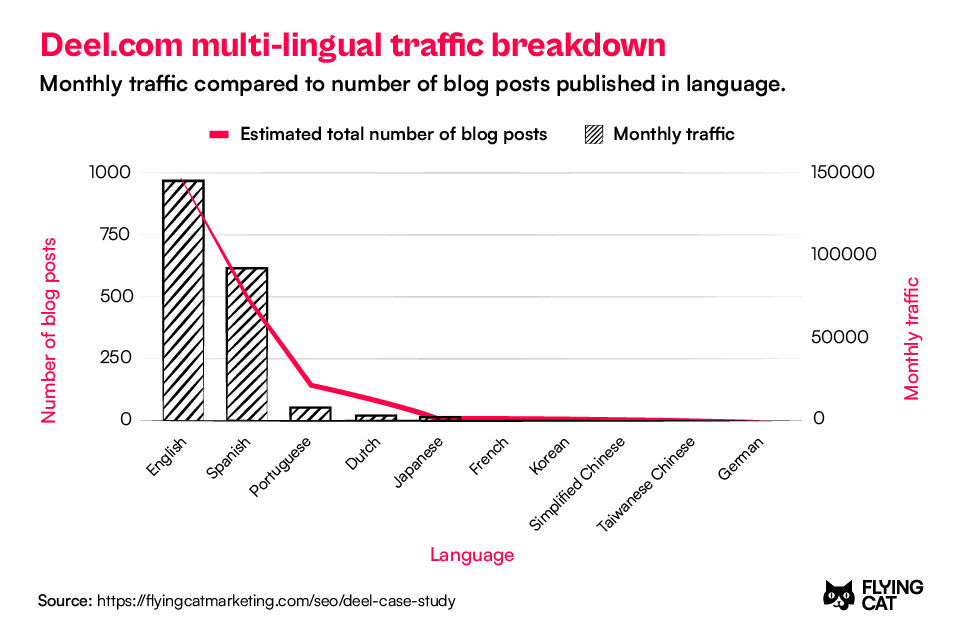
So there’s a clear correlation between how much content is created and how much traffic is gained per language.
What I found most interesting is that Deel.com isn’t just translating content, like many people who do multilingual SEO try to do.
Capture new markets with international SEO
Find out how our multilingual, multi-region team can help you drive international traffic and conversions.
Get a marketing consultation
For example, the first page of the Spanish blog talks about legally compliant HR solutions and hidden payroll costs.

While the English blog talks about getting visas in different places and filing forms.
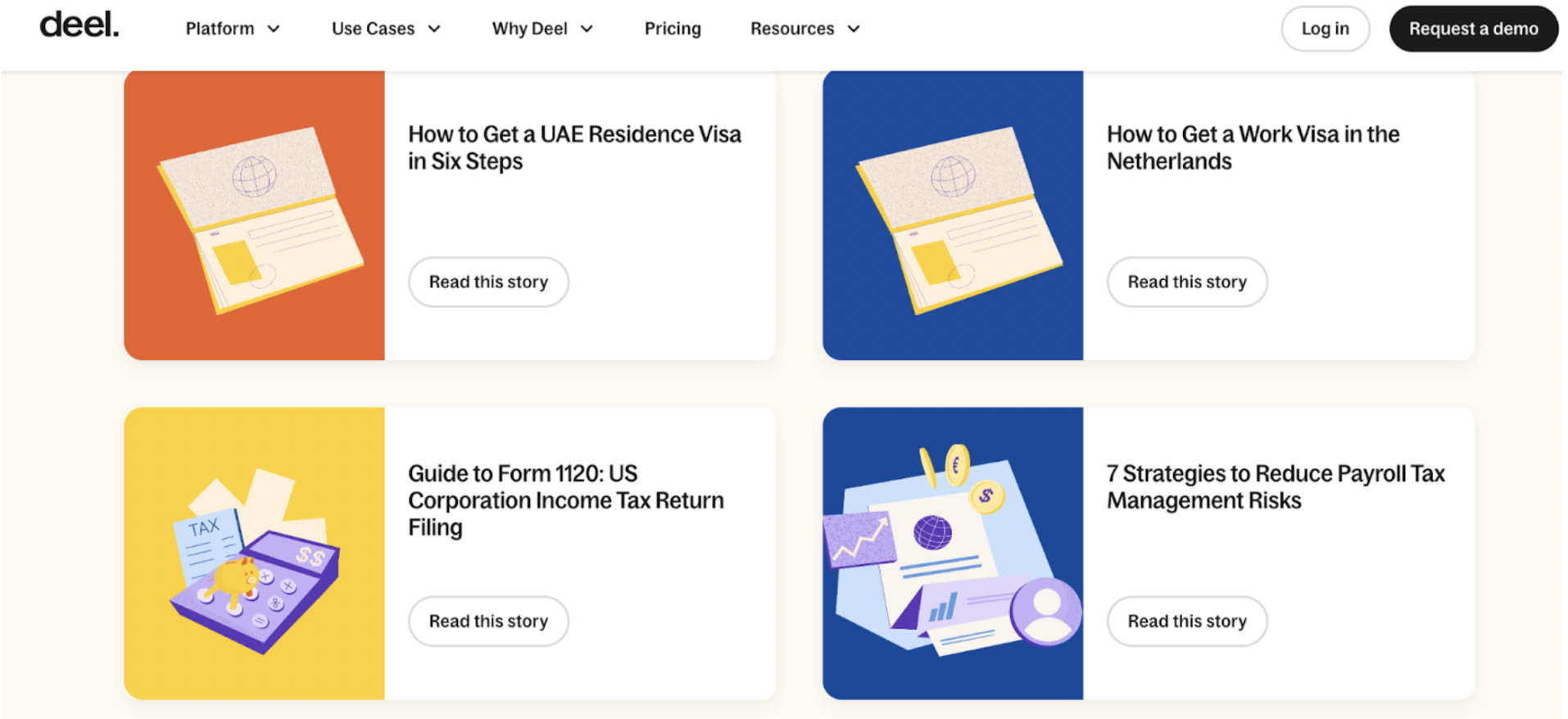
Now, I am not sure how many of these are translated or created from scratch—that would take a little more analysis than I’m able to resource for this article. But the point is that they curate the feed for Spanish speakers in a way that fits that audience.
Additionally, the Spanish blog has localized lead magnets, graphics and next steps—it’s a fully localized experience.
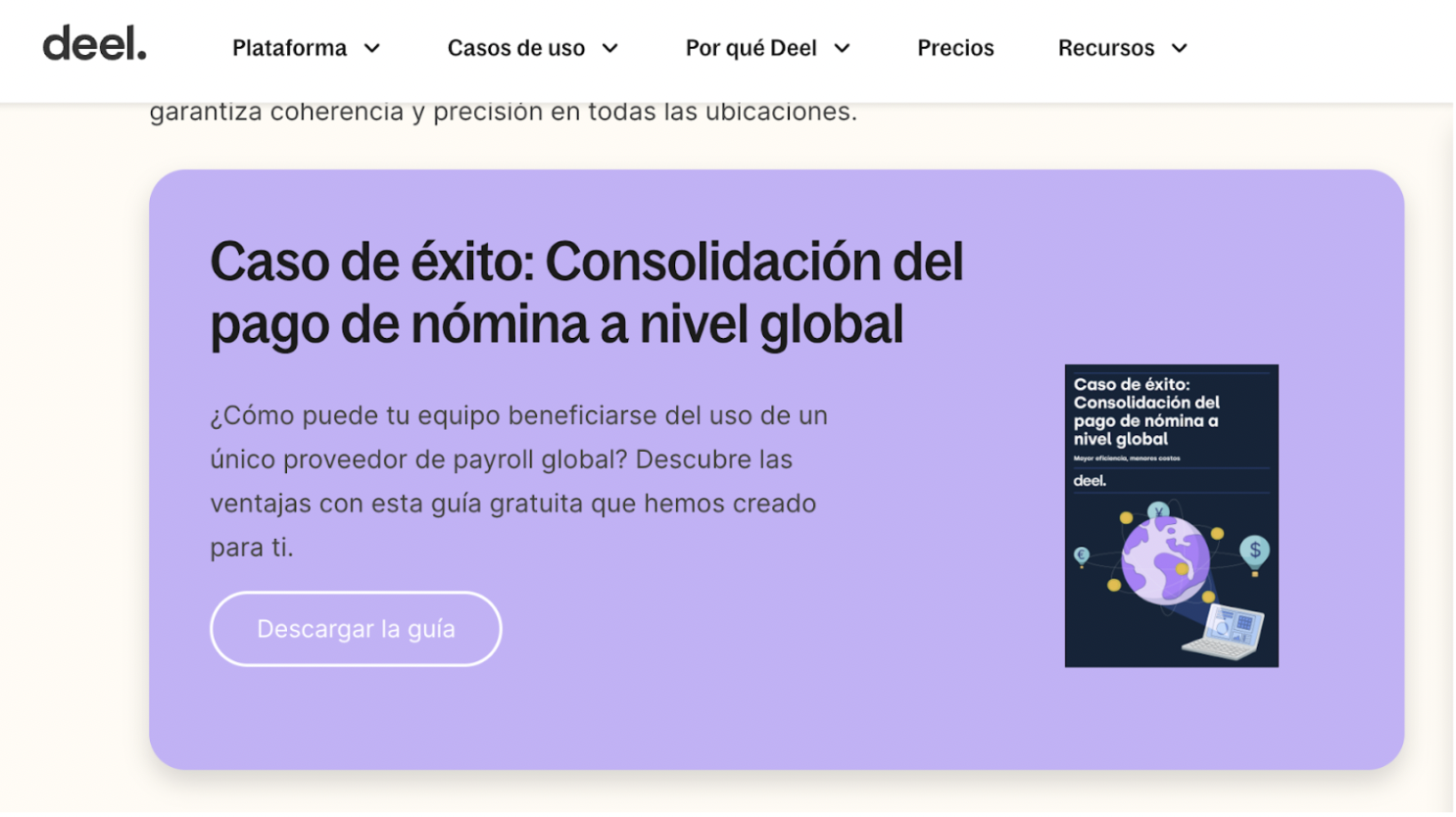
2. Templated pages by job title
Deel has multiple styles of “templated” pages, even if not exactly programmatic, based on job titles.
For example, they have 33 pages with different interview questions by job title generating 6k visits a month.
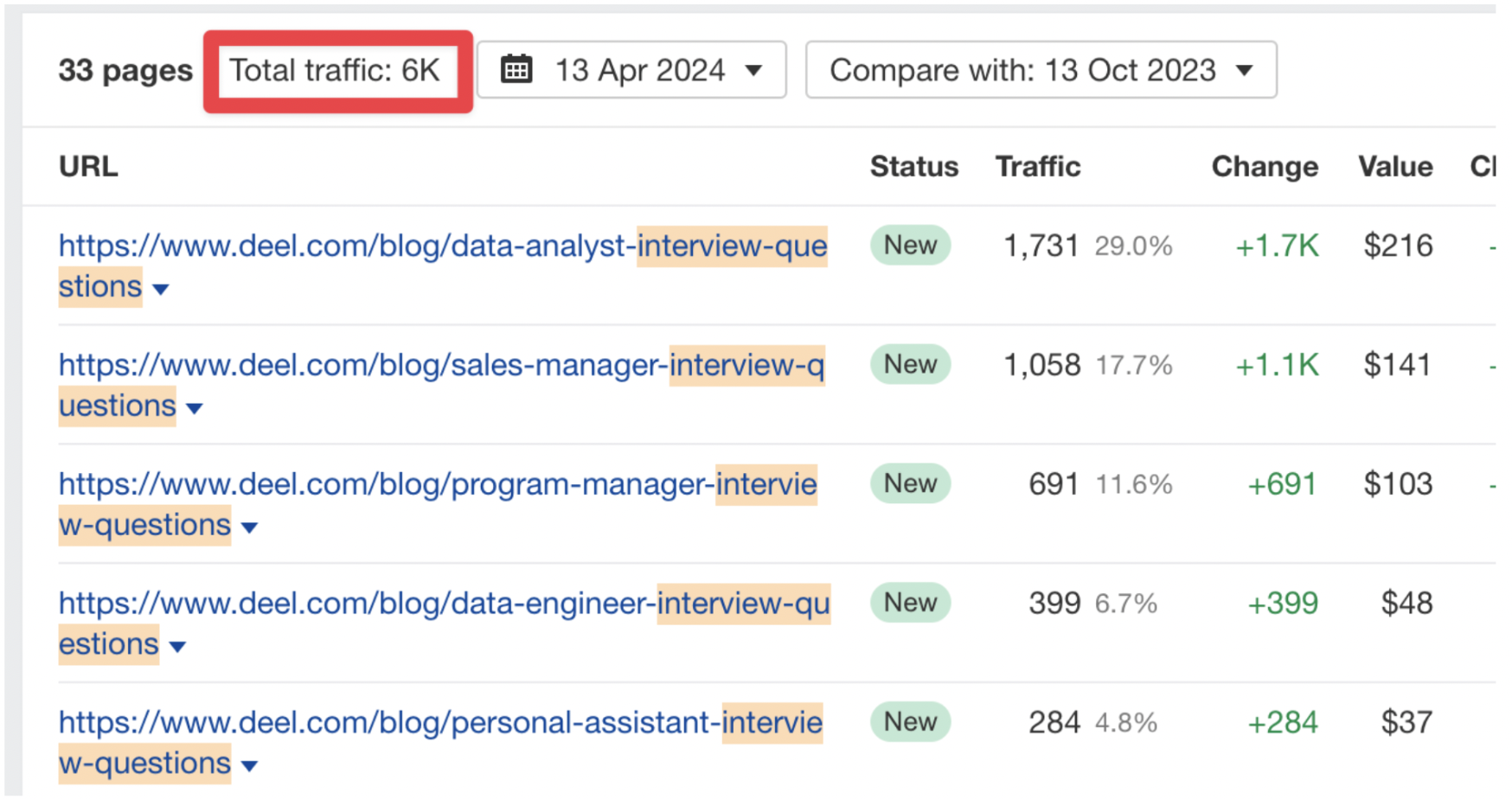
It looks like they published all the pages within a 2-week period at the end of 2023. Interview questions and simple content like this (that isn’t thought leadership or legal-focused like a lot of Deel’s content usually is) can easily be scaled with AI.
I’m sure they didn’t copy-paste from AI because the content looks good and I don’t even know if they used it at all. But, AI is pretty good at content like this, so it would be a good opportunity if they didn’t.
(But with 33 pages in 2 weeks, I think they must have had some AI help).

This means they can scale this program while focusing their content resources and manual expertise on more of their thought leadership and legal/payroll pages.
They also built out job description templates for 78 different job titles.
At the time of writing, these templates are still early days. They probably launched 7 months ago, but are the next section in the website to drive the most traffic after the blog and glossary (in English).

I won’t say this is their biggest winner—adding only a bit under 2.5k per month in traffic is only 1% of their total monthly traffic, but it all fits in with the clusters around different job titles.
These pages have a job description template for at least 78 different jobs:
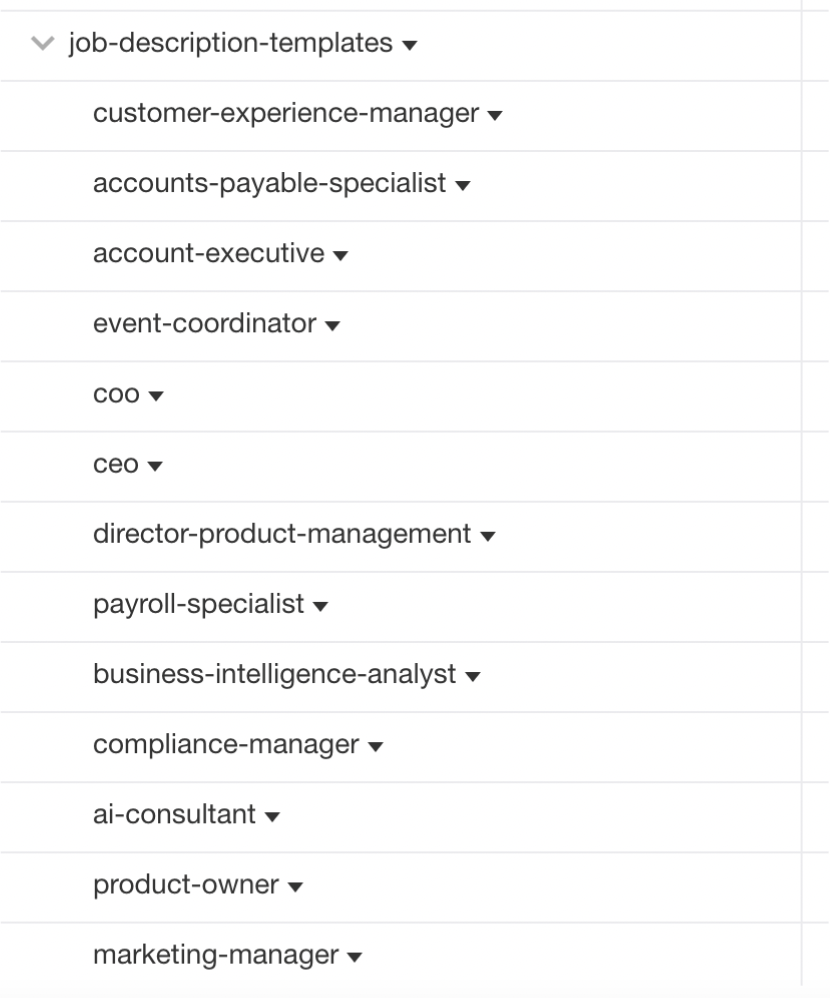
This is a mid-funnel play for Deel. People who are looking to write and publish job descriptions are hiring.
But it wouldn’t make exact sense to drive them directly to a demo here, since they didn’t search for a tool like Deel.
The CTA invites them to explore free tools and calculators to help them with hiring. The tools pages include things like employee cost calculator, or global employment comparison.

The tools aren’t gated.
Instead, they provide a personal response showing the user that Deel can help their very specific situation:
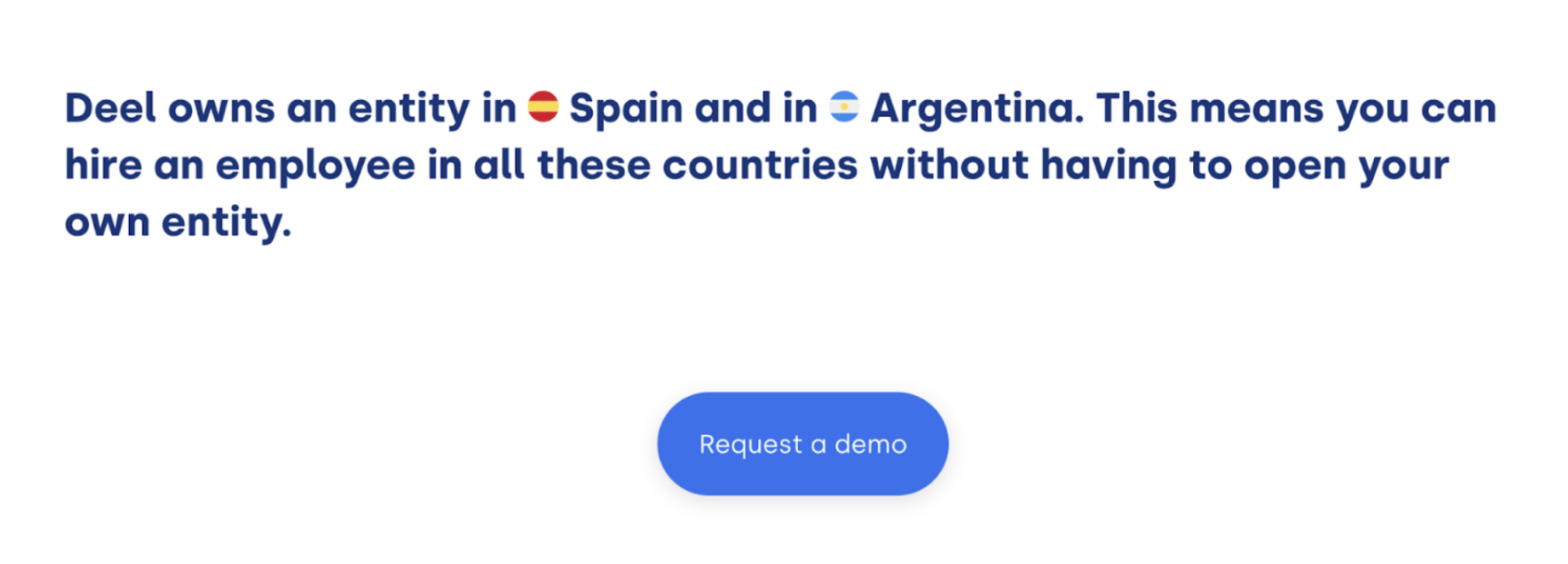
So while there are a few steps to the funnel, it’s well-defined and targeted to the user, meeting them where they’re at.
I don’t know the conversion rate of these pages but I imagine it’s higher than the 0.8% benchmark we see around B2B, even if the traffic itself isn’t super high.
Most of these keywords are so long-tail and so specific. You could not confuse the searcher’s intent. Plus, they’re all easy to rank for.
Each page ranks for somewhere between 50-300 different variations of the keywords, which gives us lots of opportunities to be found:
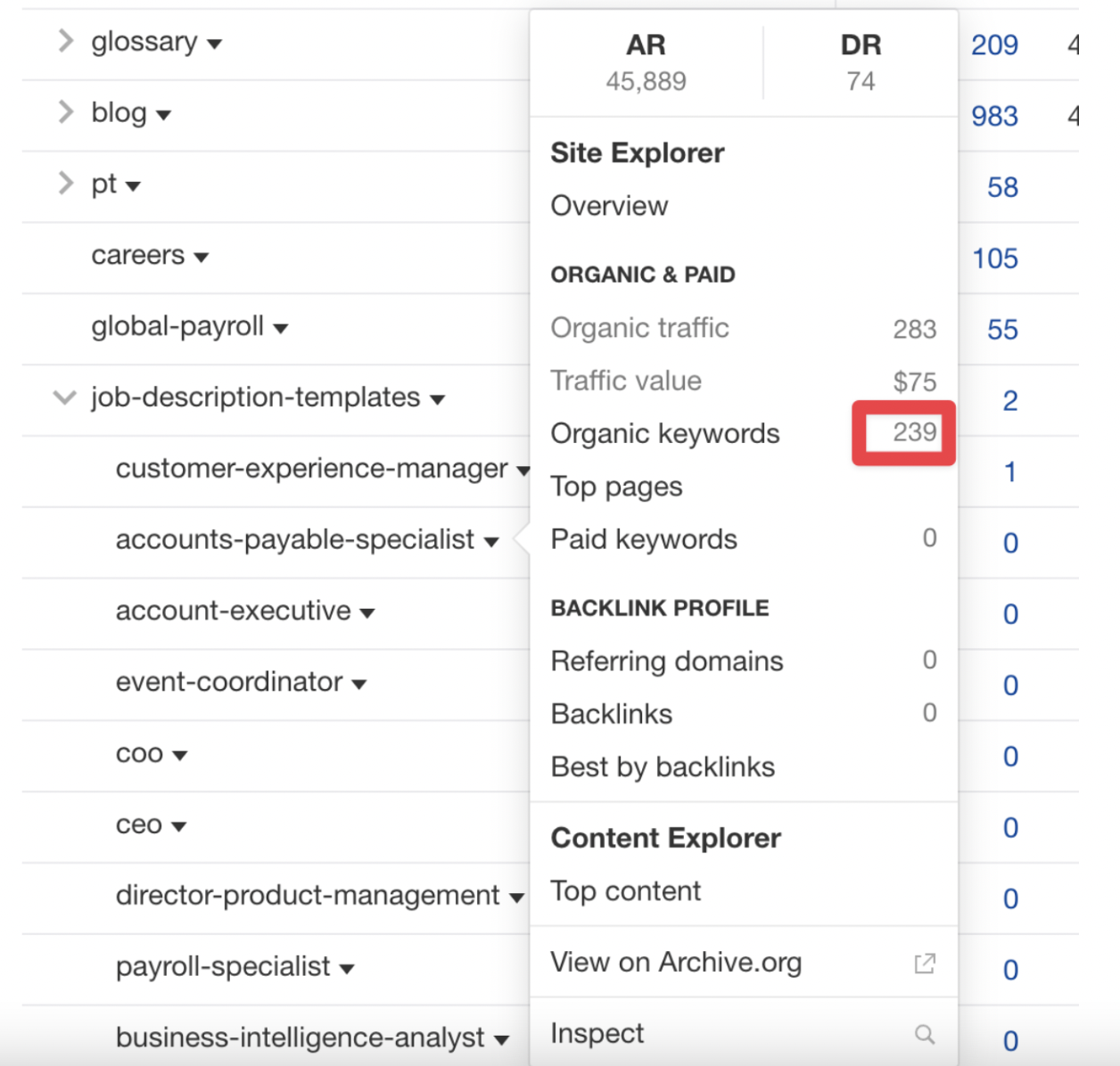
Last thing—the production is easy. I don’t know how the Deel team produced these, but these kinds of templates are an example of content that Generative AI can do very well.
4. Optimizing for featured snippets
Deel has more featured snippets than any of their competitors online.
With over 40k featured snippets, this is clearly a part of their strategy.
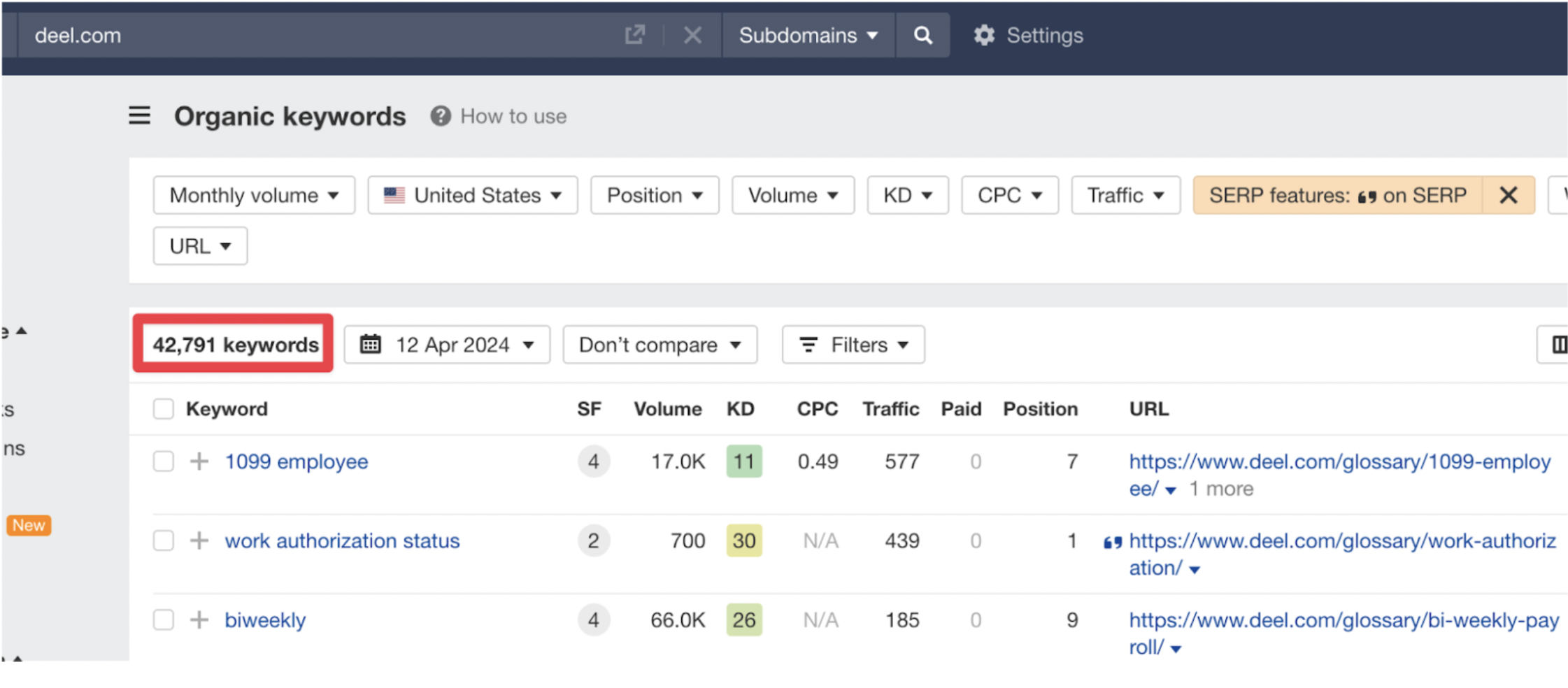
They have 3x more featured snippets than most of their competitors.
Their strategy: give the most robust answers, with fewer words. Deel uses the BLUF (bottom line up front) strategy for their featured snippet optimization.
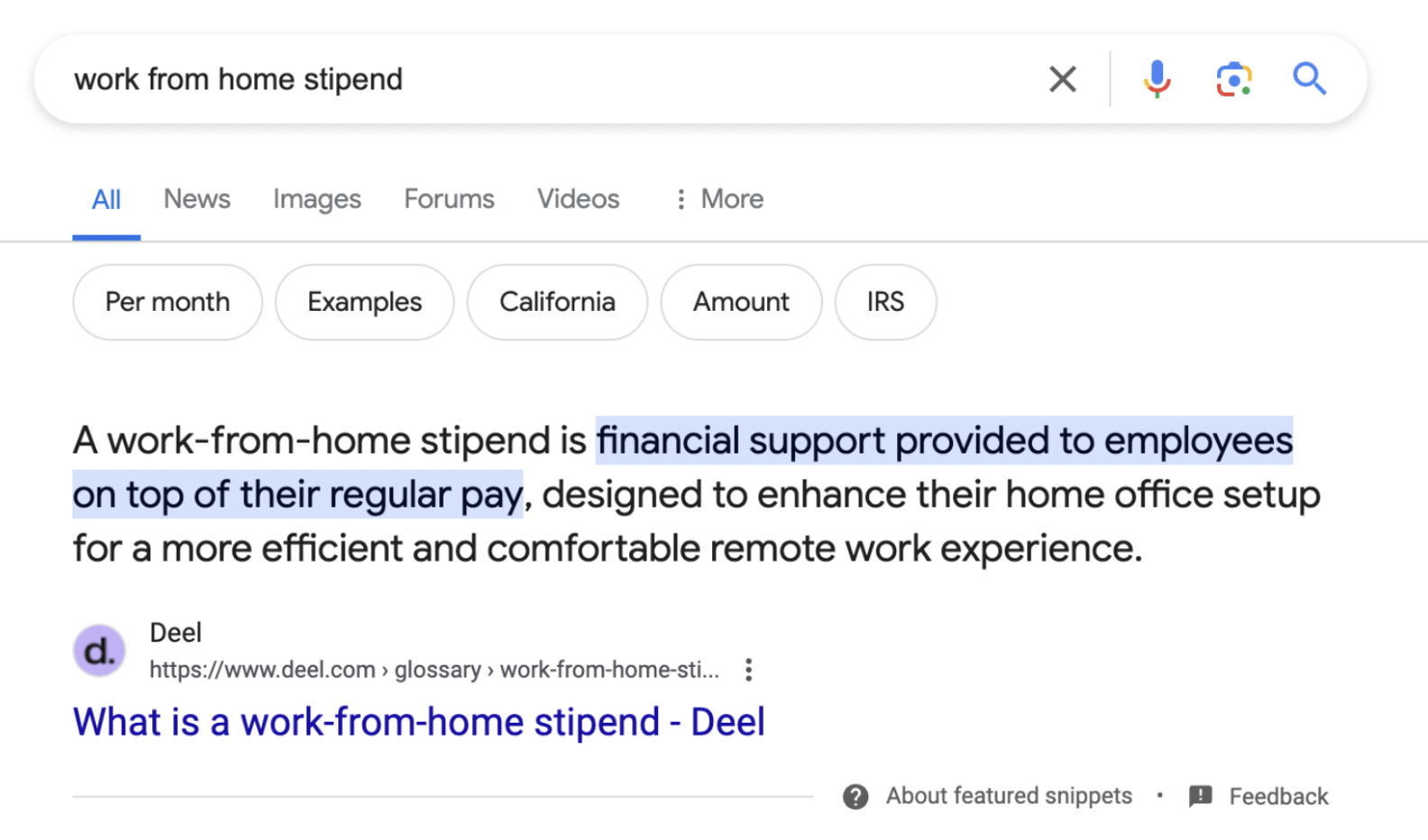
Every post gets straight to the point from the very beginning, which not only helps them get straight to the search intent, but also helps them rank for featured snippets.
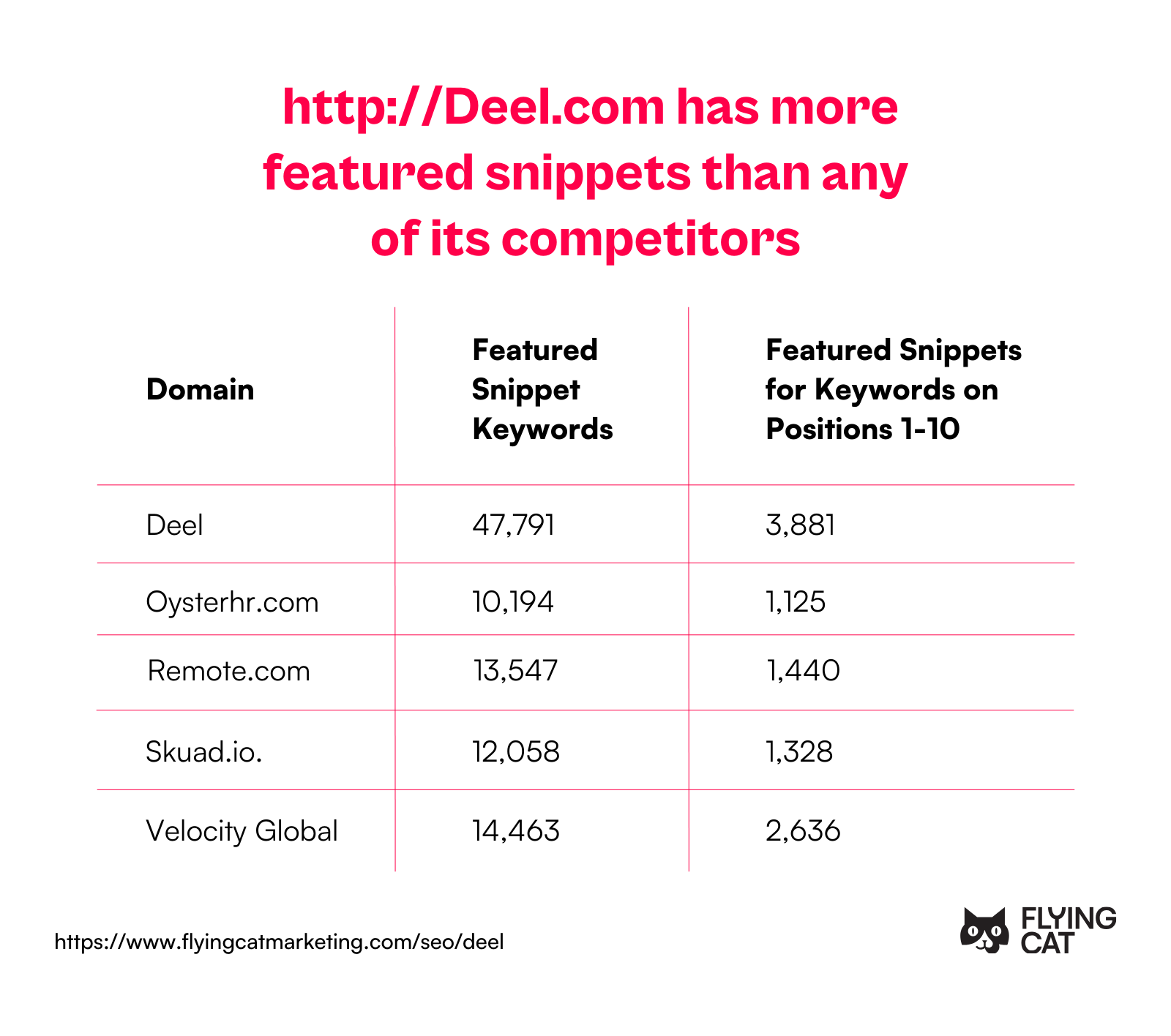
Most of their featured snippets come from the glossary pages, which are great for featured snippet, definition-style content. For these keywords, competitors are using blog posts or even “ultimate guide” type content, which isn’t as appropriate for featured-snippet style content.
5. Naturally building backlinks
Deel.com is proud to say they have never spent a dime or a minute on intentionally link building.
That means all their links are naturally built.

But they still have almost 40k links.
They’re done this through digital PR methods and creating their own shareable assets.
Their recent State of Global Hiring Reports from 2022 and 2023 have over a hundred links each. But then they also collect data for shareable assets, like minimum wages per country or expat tax break guide.
It’s useful and valuable content that can either naturally gain links, or with a little digital PR effort, makes it really easy (and free) to build very valuable links. Even some of their tools I mentioned above get links to them.
My takeaway here is that building useful assets that drive links is just as important as building content that will drive traffic and revenue. It’s all holistic and all works together. These natural links help build brand awareness for Deel.
Final thoughts
Deel invested early in SEO and started where they could: with blog post content, working with freelancers and one content person.
They did very well by focusing on the two main modifiers that they can help with: locations and job titles. Now, according to LinkedIn, there are 402 people at Deel with the word “content” in the title, and 126 with the word “SEO” in their title.
They’re building an SEO moat. The SEO team seems to be able to really well communicate their vision to leadership, creating a culture of SEO that is needed to create a case study like this one.
